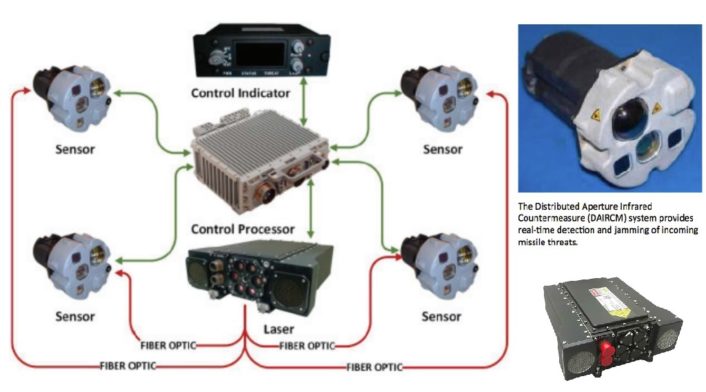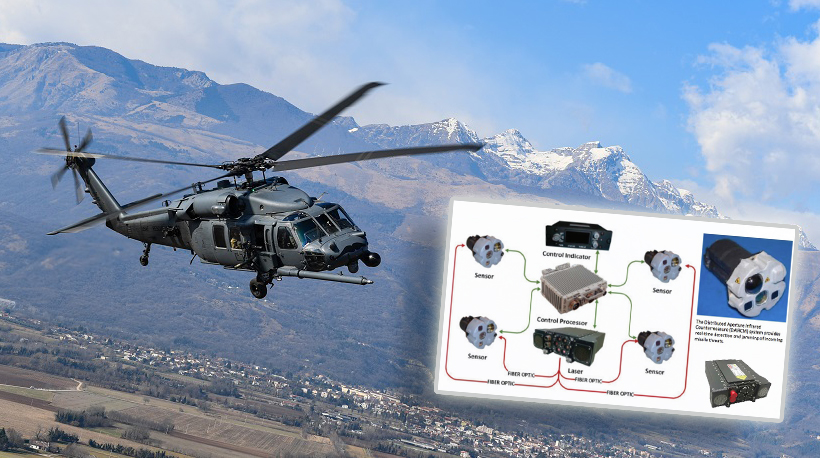The system will be installed on 30 helicopters in response to a Joint Urgent Operational Needs Statement.
Leonardo DRS, U.S. based subsidiary of the Italian firm, delivered on March 18, 2020 the first operational AN/AAQ-45(V) Distributed Aperture Infrared Countermeasure (DAIRCM) fitted to an HH-60G Pave Hawk helicopter. The contract, awarded by the U.S. Air Force Material Command in 2018 in response to a Joint Urgent Operational Needs Statement (JUONS), covers the installation of the DAIRCM on a total of 30 helicopters plus 16 additional kits.
“Leonardo DRS is proud to enhance the HH-60G helicopters with a state-of-the-art protection system. The DAIRCM system will immediately enable combat survivability for our flight crews while supporting their ability to accomplish diverse mission sets in any operational setting”, said John Baylouny, executive vice president of Leonardo DRS.
As advertised by the company, “DAIRCM is an aircraft survivability system approach that utilizes a single sensor for both 2-color IR missile warning and wide field of view gimbal for threat countermeasure. Additional capabilities of the sensor include hostile fire indication (HFI), laser warning, limited Degraded Visual Environment capability, distributed sensors available for providing 360-degree situational awareness.”

The DAIRCM was originally developed and evaluated with the U.S. Naval Research Laboratory (NRL) following a 2015 JUONS. According to public Director, Operational Test & Evaluation (DOT&E) reports, “the system uses a single, centrally installed laser that can feed all of the beam directors. The threat warning sensor sends raw video and digital data information to the processor, which analyzes the data for an incoming Missile, Laser, or Hostile Fire threat. If the processor detects a threat, it notifies the aircrew through the control interface unit and initiates the laser to direct jamming energy at the incoming missile”.
According to the same reports, preliminary test results showed that the DAIRCM is capable to successfully defeat vehicle-launched, infrared-guided missiles, MANPADS, laser-guided threats and hostile fire.
The U.S. Air Force already tested a limited capability configuration of the DAIRCM on an HH-60G in 2018, before the contract award, while the U.S. Navy tested the system in on MH-60S (2018 and 2019), AH-1Z and UH-1Y (2019) helicopters. The U.S. Special Operations Command (SOCOM) is evaluating the system for installation on the A/MH-6M Mission Enhanced Little Bird of the 160th SOAR with potential use also on MH-60 and MH-47. The Little Bird is currently the only helicopter in the SOCOM inventory without protection from IR guided missiles.
The USAF is integrating the DAIRCM system also on the new HH-60W Jolly Green that will replace the HH-60G in the near future. The service is planning to buy 113 helicopters, with the first two currently undergoing test and evaluation and deliveries of operational aircraft starting later this year.








